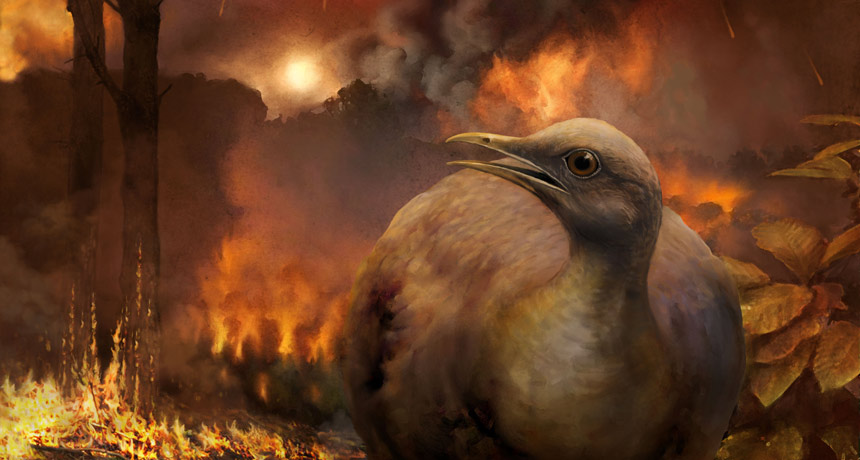How birds may have escaped the dino-killing asteroid impact
New study explores what let some flying dinos survive what was almost the end of their world

RUN, BIRD, RUN Birds most likely to have survived a mass extinction 66 million years ago would have been small (as seen in this artist’s depiction), able to fly and just fine living on the ground, researchers say.
Phillip M. Krzeminski